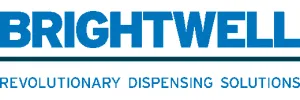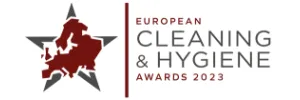News & Insights
Read the latest news from us and our clients across the globe

Posted on 14 March 2014 by adtrak.admin
What’s next for food waste?
With the target to halve edible food waste by 2020 drawing ever closer, a growing number of food manufacturers and retailers are improving their waste prevention strategies. But when ‘waste’ is inevitable, what then? Paul Featherstone, group director of SugaRich, investigates the extent to which such organisations are saying ‘no’ to landfill, before considering what alternative options exist for surplus food.
The UK’s ultimate goal of zero food waste to landfill may seem like nothing more than a pipedream at present. However, an increasing number of food manufacturers and retailers are in fact taking significant steps towards making this grand ambition a reality.
Legislative pressures and environmental targets have gone some way to encouraging this progress. The EU’s pledge to halve edible food waste by 2020 is an ever-pressing driver, as is the media’s continued scrutiny over unsustainable surplus food practices. Commercial factors have also had a distinct part to play because, whilst some organisations want to demonstrate stronger ‘green’ credentials to enhance their reputation and uphold their corporate social responsibility, others simply cannot afford the ever-rising charges associated with traditional landfill disposal.
The catalysts for UK improvements are therefore numerous, but progress is being made nonetheless. It is also important to note that this progress is being seen on many levels – in manufacturing, amongst retailers and within households across the country. However, the fact that you sometimes need to dig a little deeper to evidence the evolution, suggests perhaps that greater effort is still required.
On a domestic level for instance, WRAP highlighted in November 2013 that food wastefulness in UK homes is costing the country an incredible £12.5 billion per year¹. That said, the level of avoidable household waste has improved by 21% since 2007. This is a great example of the surplus food landscape – there are glimpses of encouraging progress, but this is often overshadowed by negative statistics, which cannot be ignored.
So what headway has been made in industry? Food manufacturers, retailers and other important supply chain stakeholders are said to be working more collaboratively to tackle the factors that render produce unsellable or undesirable.
Intelligent product labels are being introduced, for example, to prevent consumers from disposing of food waste that they wrongly believe has ‘gone off’. WRAP also launched the Fresher for Longer initiative² on 5th February 2014, which strives to maximise the home shelf-life of products by improving consumers’ use of packaging and the information printed on it. And, in late January 2014, members of the British Retail Consortium signed up to a new range of sustainability targets and commitments under the initiative – A Better Retailing Climate: Driving Resource Efficiencyᵌ. As part of their pledge, signatories are said to be tasked with achieving greater consumer dialogue to alter purchasing habits and encourage more efficient food consumption – a problem that has perhaps become more important in the money-saving era of ‘BOGOFs’. Participating supermarkets have also committed to publish data on food waste they create at the retail stage, with Tesco being the first to do this back in November 2013.
Surplus food is clearly under the spotlight and, consequentially, waste prevention is being progressively communicated. What’s more, when the generation of food waste cannot be avoided, this drive towards a resource efficient economy means the traditional landfill route is no longer considered as the first option. On the contrary, manufacturers and retailers, large and small, are increasingly saying no to disposal entirely.
This is because there is a growing acknowledgement that residual food is in fact a resource from which future value can be harnessed, and with this, the buzz surrounding anaerobic digestion (AD) appears to be getting louder.
Admittedly, AD does play a role in the development of efficient waste management and renewable energy systems. Essentially a four-stage breakdown of organic matter, it creates methane that has the potential to be used as a vehicle fuel; and/or biogas which can be burned to produce heat and electricity; digestate which can be used as a fertiliser; and water. However, this process should not be seen as the only other option for residual food.
Under the principles of the waste hierarchy, energy recovery is only marginally better than disposal. So, following attempts to prevent and minimise the creation of food waste, efforts should then be focused on reusing and recycling surplus produce instead. To this effect, it is somewhat frustrating that Government funding and subsidies exist to support the anaerobic digestion of surplus food, which could legally be recycled and fed. It could be argued that this is potentially obstructive to the UK’s wider circular economy progress, especially when alternative methodologies exist to keep many valuable nutrients in the food chain.
Long-term education and awareness-raising activities are therefore necessary, so that food manufacturers and retailers understand that these alternative approaches exist. Subsequently, a growing number of these companies, of varying sizes, are striving to achieve ‘closed loop’ solutions for their ‘waste’.
One such example is the segregation and recovery of surplus starch-rich foods, which are unsuitable for human consumption. These foods – breads, biscuits, cakes and breakfast cereals to name just a few – can then be recycled and converted into high-energy animal feed. To strengthen the resourcefulness of this approach, food packaging can also be streamed and extracted for recycling.
The process is complex and subject to strict regulation and quality control to ensure a safe, traceable and suitable feed. However, if carefully managed, the benefits are multi-layered.
From the waste producer’s point of view, this ‘food factory to farm’ approach saves money, ensures waste hierarchy compliance and reduces the environmental damage that would otherwise be caused if the food was incinerated or left to biodegrade on a landfill site. The company’s CSR status is also strengthened, as is its reputation amongst the increasingly discerning media and general public.
The creation of a nutritious animal feed, which can be blended to suit farmers’ specific requirements, also improves the future quality of livestock that people subsequently eat. Interestingly, this enables the traditional concept of the linear food chain to become much more circular.
Once again this is an opportunity for the ‘waste’ industry to spearhead an economically and environmentally advantageous approach to business. With collaborative efforts and intelligent thinking, value can be achieved from a surplus product, for as long as food ‘waste’ remains an issue.
www.sugarich.co.uk
References:
¹ Household Food and Drink Waste in the United Kingdom 2012 http://www.wrap.org.uk/sites/files/wrap/hhfdw-2012-main.pdf
² The Fresher for Longer initiative
http://www.wrap.org.uk/fresherforlonger
ᵌ A Better Resource Climate: Driving Resource Efficiency
http://www.brc.org.uk/ePublications/ABRC_Driving_Resource_Efficiency/
Published in CIWM – March 2014
Experts in Public Relations Services & Communications Management
Our ServicesGenuine industry specialists in cleaning and hygiene, environmental and recycling, and facilities management
Our Sectors












